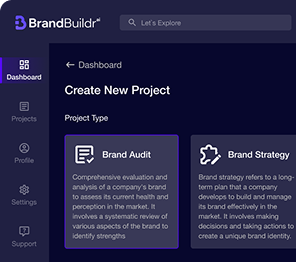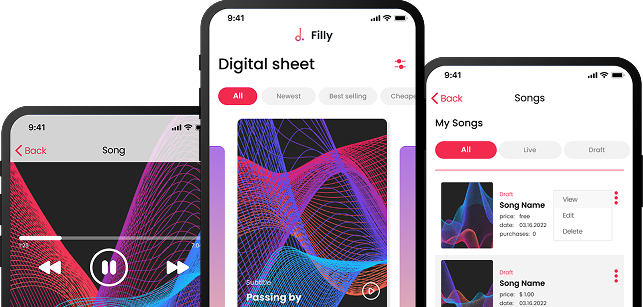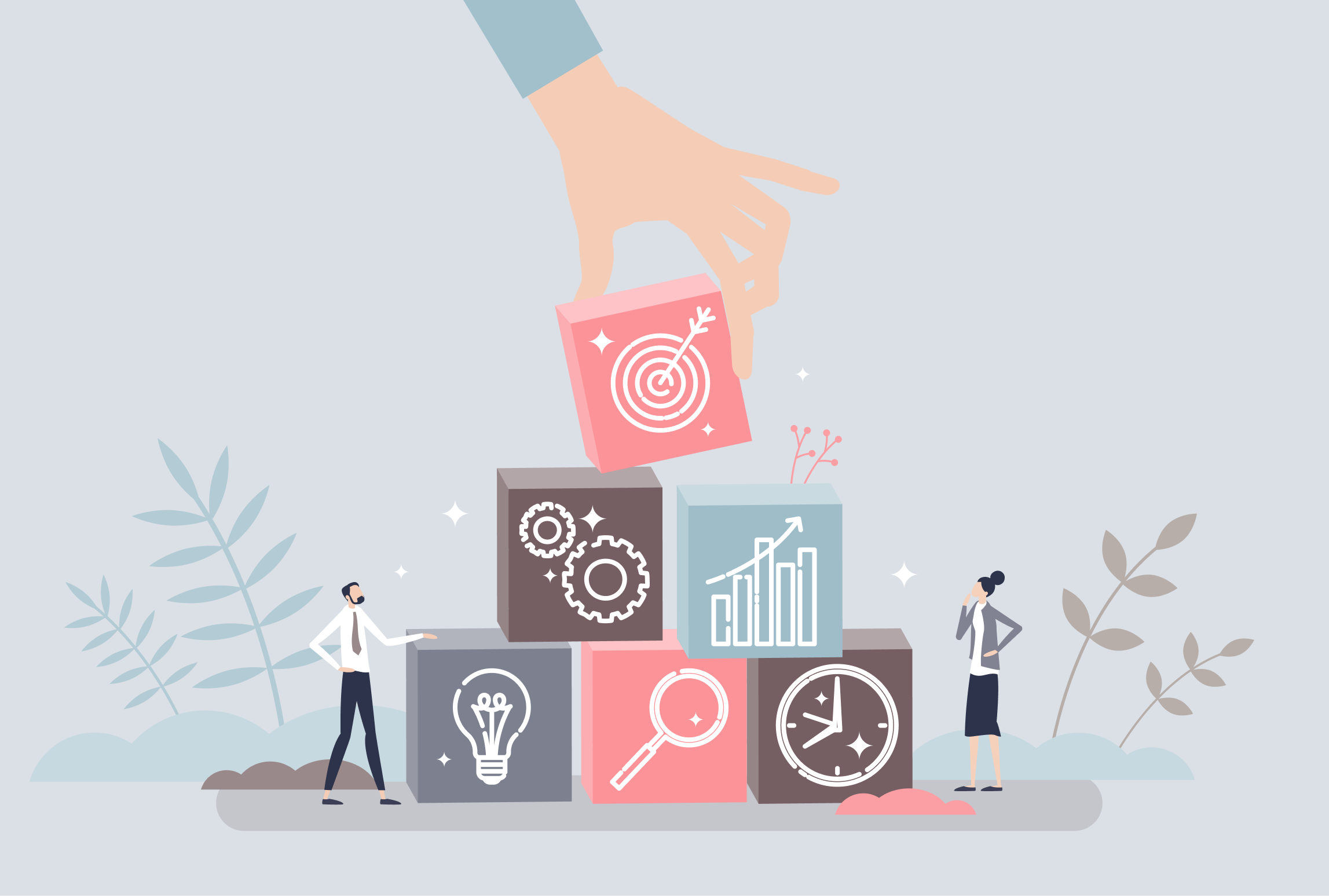You’ve got an app idea, a vision, or maybe even a pitch deck. But now comes the big decision: Should you choose a mobile application or web application development?
It’s one of the first (and most important) questions that product teams face.
Some apps need to live on users’ phones, take advantage of GPS and notifications, and work offline. Others just need to be accessible, fast, and functional across any browser or device. Then there’s a growing middle ground of web mobile applications and progressive web apps (PWAs) that blur the lines between both worlds.
This guide will break it all down. We’ll look at what each type of app is, real-world examples, and the situations where one option might make more sense than the other.
.png)
What Is a Web Application?
A web application is a software solution accessed through a web browser over the internet. Unlike static websites, web apps offer dynamic interaction, users can log in, create, modify, or delete data in real time, all within their browser. They are platform-independent, requiring no downloads, and can be accessed via Chrome, Safari, Firefox, and other browsers on desktop or mobile.
Built using HTML, CSS, JavaScript, and server-side languages like Python or Node.js, web apps rely on internet connectivity and backend servers to handle processing. They’re ideal for products where fast deployment, cross-platform access, and quick updates are essential.
Example of a Web App in Action
A perfect example of a web app is Google Docs. It allows users to create and edit documents collaboratively without installing anything. Other notable examples include:
- Trello – A web-based project management board with drag-and-drop functionality.
- Canva – An in-browser design platform used for creating social graphics and marketing materials.
- Dropbox Web – A cloud storage service accessible entirely from your browser.
These apps prove that browser-based platforms can offer highly interactive, user-friendly experiences rivaling native apps.
What Is a Mobile Application?
A mobile application is a software application built specifically for smartphones or tablets. These apps are developed for specific platforms (using Swift or Objective-C) or Android (using Kotlin or Java) and are downloaded from the App Store or Google Play.
Mobile apps function directly on the device and can access features like the camera, GPS, accelerometer, and local storage. They are designed to deliver an immersive experience optimized for mobile use.
Mobile App Benefits and Limitations
Mobile apps are known for their performance and deep integration with device hardware. They provide offline access, push notifications, and seamless user flows. This makes them ideal for applications where real-time interaction and native device functionality are essential.
However, mobile apps also come with higher development costs, require ongoing updates, and depend on users to download them, making initial user acquisition more challenging. Additionally, app store approval processes can introduce delays in releasing new versions.
Web Mobile Application: Is It a Middle Ground?
The rise of web mobile applications offers a flexible middle ground. These are browser-based applications that are designed to look and behave like mobile apps. With responsive design and mobile-optimized interfaces, these web apps deliver a native-like experience without needing to be installed.
%20(1)%20(1).png)
Responsive web apps adapt seamlessly to different screen sizes, while Progressive Web Apps (PWAs) go further by enabling offline functionality, faster load times, and home screen installation on mobile devices.
Advantages of Web Mobile Applications
Web mobile applications provide significant cost advantages because they use a single codebase that runs across all devices. They're easy to maintain, faster to update, and require no app store submission. For startups and early-stage projects, they offer a smart way to reach both desktop and mobile users without building separate apps.

Progressive Web Apps: Bridging the Gap
Progressive Web Apps (PWAs) represent a hybrid of web and mobile experiences. They are built using standard web technologies but enhanced with capabilities like service workers and web app manifests. These enhancements enable offline functionality, background updates, push notifications, and a native app-like experience.
Unlike traditional mobile apps, PWAs are accessed via a browser but can be added to a user's home screen, eliminating the need for app store distribution.
Example of a Progressive Web App
A notable example of a progressive web app is Starbucks’ PWA, which lets users browse the menu and customize orders offline. Twitter Lite provides full Twitter functionality with minimal data use, and Uber’s mobile web app offers ride booking even on slow networks and entry-level smartphones.
These real-world PWAs prove that businesses can deliver high-performance mobile experiences without the overhead of full native app development.
Web Application vs Mobile Application: Key Comparison Points
When comparing a web application and a mobile application, five key dimensions often guide decision-making:
- Performance
Mobile applications generally offer faster performance because they’re built specifically for the hardware they run on. Web applications, while highly capable, rely on browser performance and internet connectivity, which can introduce delays. - Device Capabilities
Mobile apps have direct access to device hardware like GPS, cameras, Bluetooth, and biometric sensors. Web apps are more limited in what they can access, although advancements like the Web API are closing the gap. - Development Time & Cost
Web apps typically require less time and cost to develop because they use a single codebase. In contrast, mobile apps require platform-specific builds (iOS, Android), which increases both development and testing time. - User Engagement
Mobile apps can send push notifications, access the home screen, and run offline, all of which contribute to higher user engagement and retention. Web apps rely on user-initiated visits and browser limitations. - Offline Access
Mobile apps generally function offline by design. Web apps, unless they are PWAs, depend on a stable internet connection. PWAs, however, can cache content and provide some offline features.
When to Choose a Web App Over a Mobile App
Choose a web app if:
%20(1)%20(1).png)
- You're building a Minimum Viable Product (MVP) and need fast, cost-effective deployment.
- Your users are primarily desktop-based or will access the product via multiple device types.
- You need to iterate quickly, run A/B tests, and gather feedback with minimal friction.
- You're developing internal business tools, admin dashboards, or client portals.
When Mobile Apps Make More Sense
Choose a mobile app if:
- Your app needs full access to device hardware, like cameras, sensors, or Bluetooth.
- You require real-time performance and speed, such as in gaming or navigation.
- Push notifications and offline access are critical to your user engagement strategy.
- You’re offering a consumer-facing product that benefits from a polished, native experience.

Final Thoughts: Finding the Right Fit for Your Product
Choosing between a web application and a mobile application is more strategic than ever. Web apps offer fast, accessible, and budget-friendly development, while mobile apps provide depth, performance, and device-native experiences. Meanwhile, hybrid approaches like PWAs continue to redefine the possibilities in both spheres.
The right choice depends on your audience, budget, timeline, and long-term goals. Whether you're leaning toward web, mobile, or hybrid development, contact Codebridge and our team will help you find the ideal approach to launch smart and scale fast.
FAQ
What are the key differences between a web application and a mobile application?
A web application runs in a browser and works across devices, while a mobile app is installed on iOS or Android and offers deeper device integration. Mobile apps provide better performance and offline capabilities, while web apps offer accessibility and lower development costs.
Which option is more cost-effective: a web app or a mobile app?
Web apps are generally more cost-effective because they require a single build for all devices. Mobile apps require separate development (or cross-platform tools), increasing costs. For early-stage startups, a web app often offers the best balance of affordability and functionality.
When should a business choose to build a mobile application first?
A mobile app is the better choice when the product requires advanced device features such as GPS, camera access, push notifications, offline use, or high performance. Mobile apps are also ideal for business models that rely on frequent user engagement and personalization.
When is building a web application the better option?
A web app is ideal when the goal is broad accessibility, fast development, and easy updates. It works well for marketplaces, dashboards, SaaS tools, and platforms where users interact through browsers. Web apps reduce friction because users don’t need to download anything.
How does user behavior influence the choice between web and mobile applications?
If your target audience prefers browsing and lightweight interactions, a web app may be enough. If they spend significant time on smartphones and expect interactive, app-like experiences, a mobile app is more effective. Researching user habits helps guide the right decision.
Can businesses build both a web app and mobile app later for full coverage?
Yes, many businesses start with one platform—often a web app or an MVP—and expand to mobile apps once they validate demand. Using cross-platform frameworks like Flutter or React Native makes future expansion easier, ensuring consistent functionality across devices.
Heading 1
Heading 2
Heading 3
Heading 4
Heading 5
Heading 6
Lorem ipsum dolor sit amet, consectetur adipiscing elit, sed do eiusmod tempor incididunt ut labore et dolore magna aliqua. Ut enim ad minim veniam, quis nostrud exercitation ullamco laboris nisi ut aliquip ex ea commodo consequat. Duis aute irure dolor in reprehenderit in voluptate velit esse cillum dolore eu fugiat nulla pariatur.
Block quote
Ordered list
- Item 1
- Item 2
- Item 3
Unordered list
- Item A
- Item B
- Item C
Bold text
Emphasis
Superscript
Subscript





















.avif)



.avif)

.avif)


